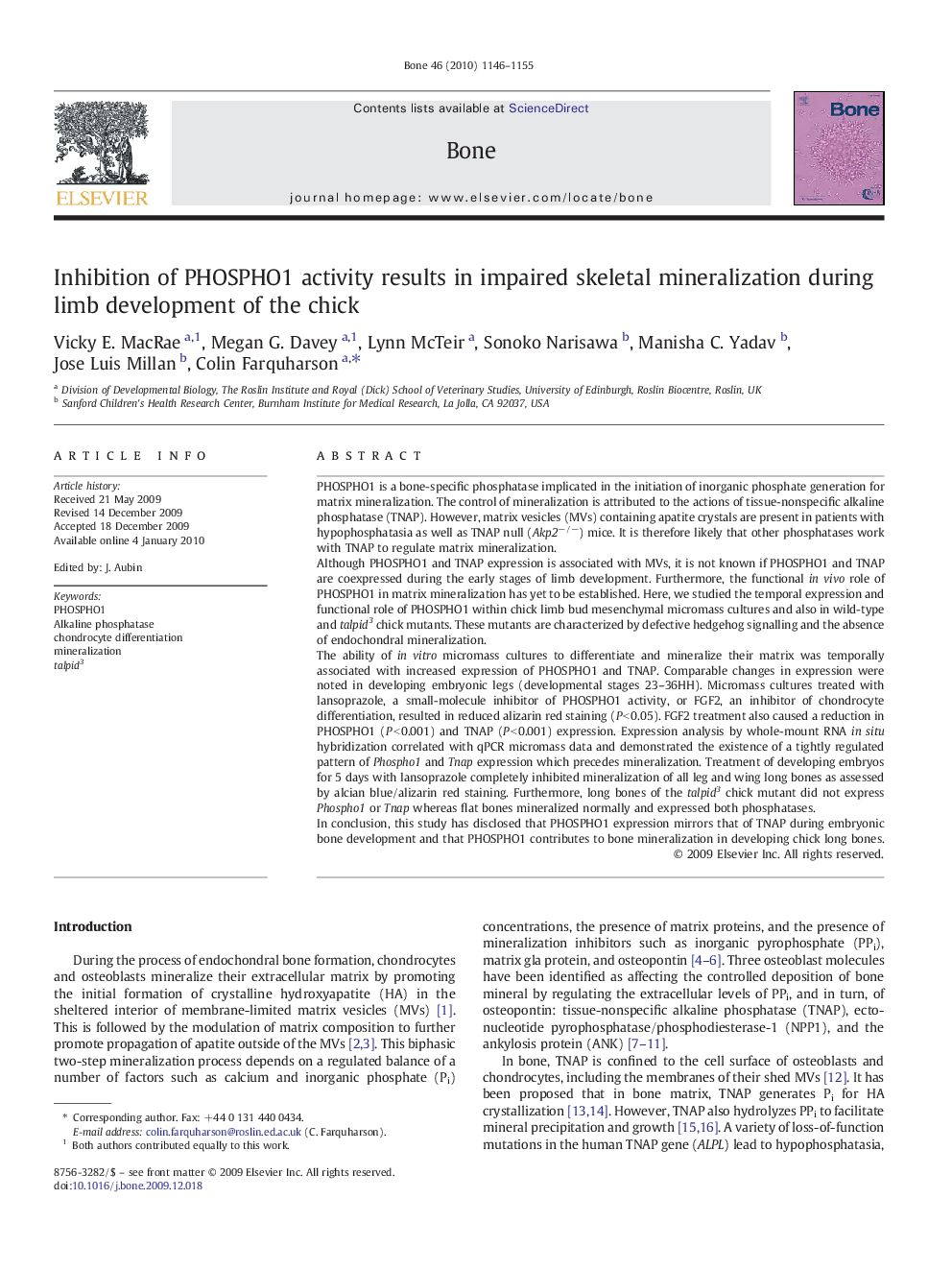| کد مقاله | کد نشریه | سال انتشار | مقاله انگلیسی | نسخه تمام متن |
|---|---|---|---|---|
| 2781114 | 1153313 | 2010 | 10 صفحه PDF | دانلود رایگان |

PHOSPHO1 is a bone-specific phosphatase implicated in the initiation of inorganic phosphate generation for matrix mineralization. The control of mineralization is attributed to the actions of tissue-nonspecific alkaline phosphatase (TNAP). However, matrix vesicles (MVs) containing apatite crystals are present in patients with hypophosphatasia as well as TNAP null (Akp2−/−) mice. It is therefore likely that other phosphatases work with TNAP to regulate matrix mineralization.Although PHOSPHO1 and TNAP expression is associated with MVs, it is not known if PHOSPHO1 and TNAP are coexpressed during the early stages of limb development. Furthermore, the functional in vivo role of PHOSPHO1 in matrix mineralization has yet to be established. Here, we studied the temporal expression and functional role of PHOSPHO1 within chick limb bud mesenchymal micromass cultures and also in wild-type and talpid3 chick mutants. These mutants are characterized by defective hedgehog signalling and the absence of endochondral mineralization.The ability of in vitro micromass cultures to differentiate and mineralize their matrix was temporally associated with increased expression of PHOSPHO1 and TNAP. Comparable changes in expression were noted in developing embryonic legs (developmental stages 23–36HH). Micromass cultures treated with lansoprazole, a small-molecule inhibitor of PHOSPHO1 activity, or FGF2, an inhibitor of chondrocyte differentiation, resulted in reduced alizarin red staining (P < 0.05). FGF2 treatment also caused a reduction in PHOSPHO1 (P < 0.001) and TNAP (P < 0.001) expression. Expression analysis by whole-mount RNA in situ hybridization correlated with qPCR micromass data and demonstrated the existence of a tightly regulated pattern of Phospho1 and Tnap expression which precedes mineralization. Treatment of developing embryos for 5 days with lansoprazole completely inhibited mineralization of all leg and wing long bones as assessed by alcian blue/alizarin red staining. Furthermore, long bones of the talpid3 chick mutant did not express Phospho1 or Tnap whereas flat bones mineralized normally and expressed both phosphatases.In conclusion, this study has disclosed that PHOSPHO1 expression mirrors that of TNAP during embryonic bone development and that PHOSPHO1 contributes to bone mineralization in developing chick long bones.
Journal: Bone - Volume 46, Issue 4, April 2010, Pages 1146–1155